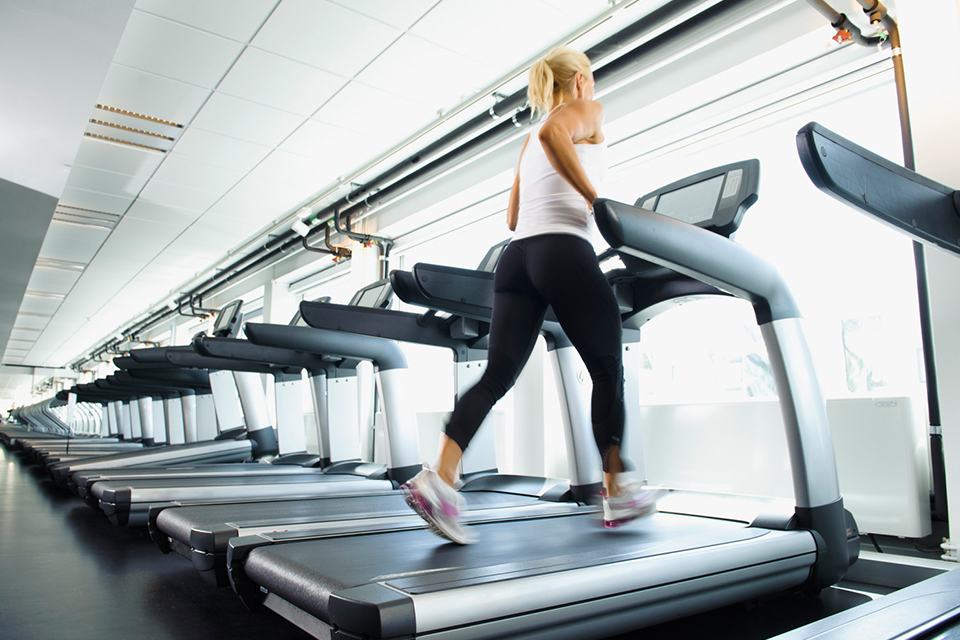Too Hot To Trot: Choosing Between the Treadmill and the Track

Welcome to May in Austin! Whether you are new to the area or anticipating your twentieth summer in the city, the height of summer in Central Texas can be hard to combat when training for any race.
With average temperatures approaching 90 degrees Fahrenheit, many people opt to hit up that lonely treadmill or seek out the local indoor running track rather than tempt fate with the thought of collapsing from heat exhaustion in front of Ryan Gosling on the trail. (Or maybe that would be a perfect "meet-cute"? Lady passes out running on the trail and Gosling saves the day?)
If you're planning on running a race in Austin this summer, how should you train if not outdoors? Should you use a treadmill or an indoor track?
Whatever you choose, the effect of the heat index in combination with your core temperature and thermodynamics can make a difference in your training outcome.
When we run outside, there are factors working both for and against us. Outdoor and even indoor track running require high levels of metabolic expenditure due to the increased force required to overcome air resistance. However, it is that same air movement that promotes cooling of the body by creating a skin-to-body/core temperature gradient.
On the other hand, treadmill running creates a sort of insulation around the runner that limits the dissipation of body heat. This is due to its stationary frame of reference and therefore lack of resistive airflow. Since your core temperature and level of fatigue will rise without the dissipation of body heat, proper core cooling equates to optimum running performance. It would seem then that we should avoid the treadmill when training for an outdoor running event in the Austin heat, but the authors of a recent National Strength and Conditioning Association (NSCA) article actually found the opposite to be true.
The researchers hypothesized that, due to the poor thermodynamics inherent in treadmill training, a runner performing a 10K time trial on a treadmill at one percent grade should have longer run times than a runner training on a 200-meter indoor running track. However, they found runners performed better (faster times) on the treadmill than the indoor track—but this was not necessarily due to thermodynamics. The subject's skin temperature was found to be higher on the treadmill than on the track, thus supporting the decreased convective thermal gradient theory. However, they also discovered a surprising difference in pacing strategy between the treadmill and indoor track run that was ultimately altering performance.
During the first kilometer of the indoor track trials, the subjects ran 9 percent faster than their average outdoor 1K pace. This resulted in a progressively slowing kilometer pace, thus producing an overall longer run time. Compare this to the first kilometer on the treadmill where subjects ran 2 percent slower than their average remaining 1K time, and had a more consistent pace strategy throughout the remainder of the run. Despite the poor thermodynamic heat gradient and a slower start, the subjects were still pulling out a faster time on the treadmill!
So what do these results mean for your training? First, interpret your treadmill running pace cautiously. Although the heat conditions on the treadmill are less favorable than the indoor track, your pace on the treadmill may still be faster than your outdoor pace. A 1 percent treadmill incline grade is suggested to mimic outdoor running. The incline grade increases metabolic demand, thus imitating the energy required to run against air resistance outdoors. (Keep in mind that rising core temperature also increases metabolic demand. Therefore, if you know you're going to be running a summer race in Austin and will be battling 100 degree temperatures, you may want to challenge your body more appropriately by increasing the percent incline. This will help you get a more realistic replication of your pacing strategy in unfavorable conditions.)
Second, you may want to skip the treadmill all together! The indoor track may give you a more realistic idea of your natural pacing strategy while replicating the energy expenditure required in running outdoors. Just remember to monitor that first kilometer pace and rein it in if necessary to maximize your energy over the entire run. (Just think how impressed Ryan will be when he sees your fabulous ponytail blowing elegantly in that marvelous thermal heat gradient.)
Either way, summer running in Austin can be a beautiful struggle. However, understanding how to modify your indoor training to most appropriately reflect your true outdoor performance means you can enjoy a summer full of all the amazing races this city has to offer.






